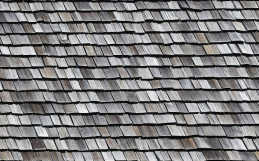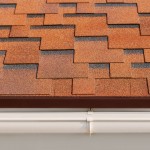(Updated Sept. 21, 2022)
Your roof plays an important role in protecting you and your family from the four-season weather of the Pacific Northwest. While you may only see composite asphalt shingles, cedar shakes, or other roof coverings, there is much more to consider when roofing a home.
First of all, do you need a new roof at all? If it’s just a matter of a few broken roof shingles or damaged flashing, a thorough inspection and repair may be all you need. Annual maintenance will also make sure you get everything you can from your existing roof.
If the gutters are filled with standing rainwater when freezing temperatures are present, the ice expands under the roofing covering – known as an ice dam. The ice melts, then freezes again, further up the roofline. All this time, the roof covering is being pushed up, allowing more water underneath during the thaw.
After a few rounds of this, water eventually finds its way under the roofing system and into your home. This could damage structural members of the roof as well as cause mold and mildew inside the walls of your home.
That’s why the entire roofing system – including the gutters – plays a part in keeping the largest investment most of us make safe and sound. Here are some of the basic steps of the roofing process that our expert team at Warner Roofing performs for re-roofing projects or new home builds.
House Roofing Process: Materials
There are many kinds of roof coverings, from the common composite asphalt shingles to cedar shakes to sheet metal roofing. All have their pros and cons, including price and longevity. The longer the roofing lasts, the more expensive it will be. That also means you could have a roof that lasts for 50 years!
After the roofing is chosen, the rest of the materials are relatively traditional. Under the roofing is the underlayment, which is either synthetic material or roofing felt. Both do an excellent job of adding a second layer of protection, so it comes down to preference.
The last part of the roofing is the decking, sheets of plywood that are fastened to the trusses of the home to complete the roof structure.
Remove old roofing material
In some cases, we may be able to re-roof a home, which means we leave the existing roof in place and simply add a new roof covering. This is a common way to save money but is only recommended in the case of a roof that is in good shape. Why get a new roof then? As part of a home remodel, changing the appearance is a good way to immediately improve the curb appeal of the home.
However, if there is damage to the roof structure, it doesn’t make sense to just cover it up. So it is advisable to tear off the old roof before installing a new roof. It’s a longer process than a re-roof, but it also ensures that your new roof will be able to do its job effectively. Warner Roofing will take extra care to keep the workspace around your home as neat and clean as possible.
Installation
Once the roof is down to the decking, it’s time to install the underlayment, flashing, shingles, tiles, or panels. The decking provides stability to the structure underneath as well as supports the weight of the roof. The synthetic underlayment or felt paper is then attached to the decking and metal flashing is put into place.
Building codes may require flashing to be placed around the eaves, valleys, or any other protruding areas of the roof around vents, chimneys, or skylights. This adds another level of reinforcement against rain, sleet, snow, and ice where traditional roof coverings aren’t as effective.
Now it’s time for the covering. Most shingles, shakes, and tiles are installed the same way: Starting from the roof edges at the bottom and working our way up. Each layer overlaps the one before it to prevent rain from gaining access to the underlayment or decking. Roofing nails are designed specifically for asphalt tab shingles, architectural shingles, and similar materials.
Other types of roofing materials include clay tiles, wood shakes, slate tiles, and metal roofing. Each roofing type has a specific installation method–screws are used for metal roofing for example. Flat roofs are something else entirely as a membrane, built-up roof (tar and gravel), and other materials specific to flat roofing are used.
We install the drip edge to protect the ends of roofing, and the ridge and hip caps, fascia boards if needed, and the gutters are then added to complete the project. After a final inspection to seal any exposed nails or trim flashing, we remove excess materials or trash from the work site.
House Roofing Process Experts
Each step in the house roofing process is key when protecting your home from the elements. A high-quality roof is the first line of defense, and when it isn’t properly installed, you could be dealing with leaks, water damage, mold growth, and more in just a year or two. Whether you live in an 800-square-foot Craftsman or a 5,000-square-foot mansion, the health of your home starts with the roof.
It’s a process we’ve performed for many homeowners over 27 years of service in Vancouver, WA, and the rest of Clark County. We have the experience you need for your roof replacement or new roof installation. We’re standing by to answer your questions, so contact us today for more information!







